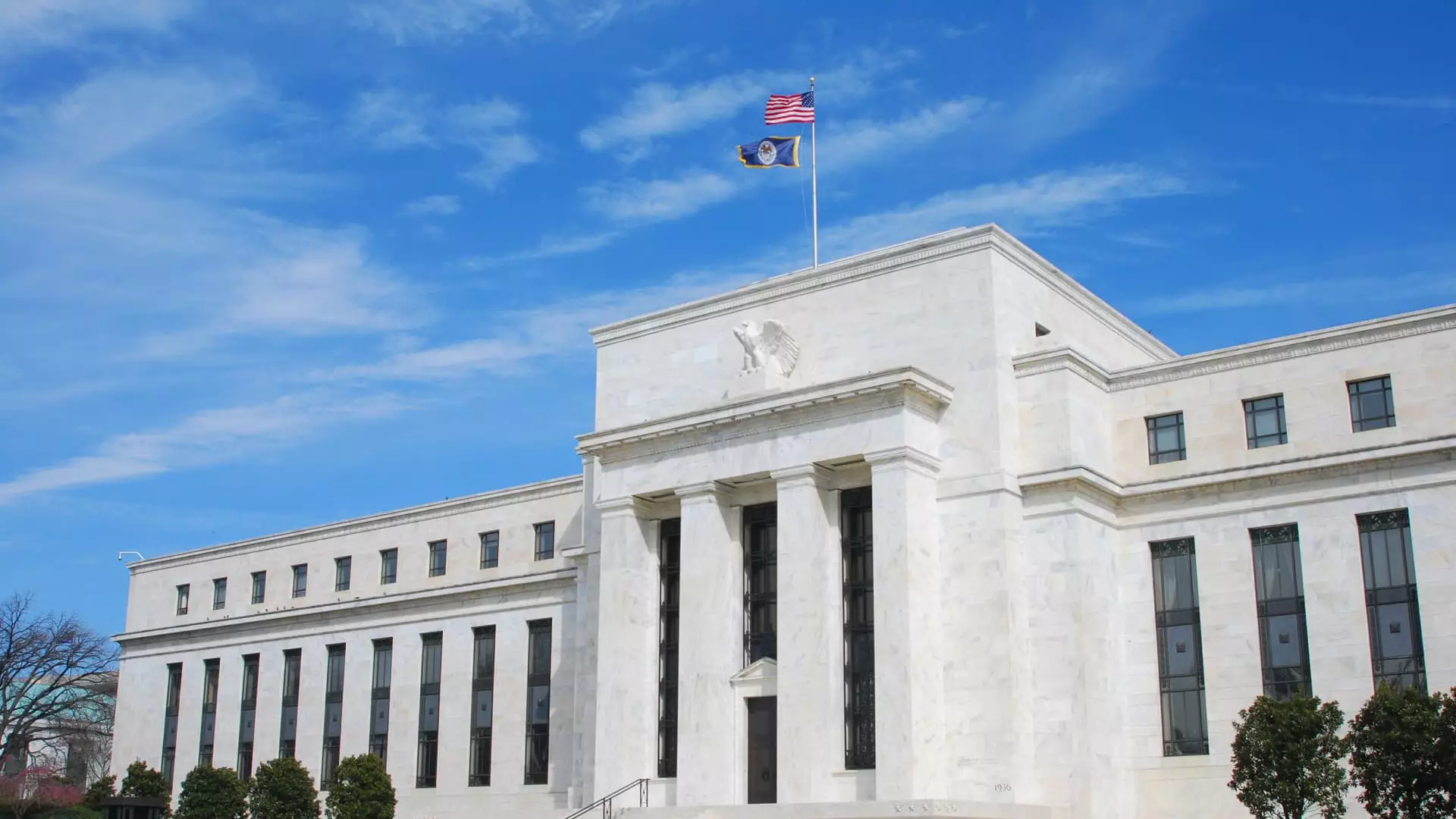The current landscape of finance is fraught with uncertainty, particularly as the Federal Reserve has opted to maintain interest rates at existing levels. This decision comes despite a glimmer of hope signaling a decline in inflation. Yet, a looming trade war is casting a long shadow, threatening to keep prices elevated across various consumer goods. As tariffs on European imports become a reality and broader economic strains intensify, we are faced with a complex mix of influences that simultaneously press down on consumers and maintain the Fed’s hesitance to cut rates.
The apparent optimism surrounding reducing inflation is counterbalanced by these escalating trade tensions. Experts like Andrzej Skiba, head of U.S. fixed income at RBC Global Asset Management, argue that we have only scratched the surface of these challenges. The uncertainty stemming from new tariffs could very well act as a catalyst for further inflation, complicating the Fed’s monetary policy options. Consequently, the central bank finds itself between a rock and a hard place—both needing to support economic growth while also battling the pressures of rising prices.
Consumer Sentiment: Stressed and Stretched
While the Fed holds the line on interest rates, the realities of consumer sentiment are less stable. Financial analysts, including Greg McBride from Bankrate.com, are raising alarms about the ongoing struggles of everyday Americans. Many households are feeling the pinch, making it incredibly hard for them to properly manage their financial obligations. With consumer borrowing costs directly affected by the federal funds rate, this moment of stasis proves detrimental to a vast segment of the population.
Although the Fed’s decisions impact various loan types, consumers have not completely escaped the clutches of high-interest debt. Current trends show that while rates on mortgages, credit cards, and auto loans have dipped slightly, they still remain alarmingly close to historical highs. This does little to alleviate the distress consumers are facing when juggling multiple debts in an economy rife with uncertainty. The irony of having stagnating federal rates while consumers are still grappling with elevated borrowing costs seems lost on policymakers.
Unexpected Resilience in the Housing Market
Interestingly, one could argue that the housing market is showcasing a form of resilience amid adversity. Mortgage rates, while still elevated, have shown a slight decrease, now averaging around 6.77% for a 30-year fixed-rate mortgage. Despite the Fed’s hesitance to lower rates, there’s room for optimism as the Mortgage Bankers Association points out that ongoing fears surrounding recession and tariff-induced inflation have led to a more competitive mortgage landscape.
However, potential homebuyers find themselves in a precarious position—facing both high prices and uncertainty about future economic conditions. The deepest irony lies in the fact that what should ideally be a period of opportunity for new buyers has been, instead, a test of endurance. While Matt Schulz, LendingTree’s chief credit analyst, acknowledges mortgage rate reductions as a positive development, the road ahead remains fraught with challenges. Buyers are forced to tread carefully, navigating a market that feels simultaneously pressing and stifling.
The Credit Card Conundrum
In the realm of consumer debt, credit cards remain a significant pain point. Current statistics indicate that revolving debt—mostly credit card balances—has surged by a staggering 8.2% year over year. For individuals already grappling with rising prices, this increase represents more than just numbers; it signals a wider crisis in financial health. Despite recent decreases in credit card APRs, the reality is that average rates are still hovering around 20.09%, a burden that many consumers struggle to bear.
The effects of last year’s rate cuts appear to be losing momentum as credit card APRs decline at an ever-slowing pace. The longer the Fed holds rates, the more entrenched the problems surrounding credit card debt will become. Households are at risk of becoming trapped in an endless cycle of borrowing and repayment, further exacerbated by rising consumer prices as influenced by new tariffs and ongoing political instability. Thus, the credit card conundrum serves as a stark reminder of the toll that restrictive monetary policy can take on those already facing economic hardship.
Shifts in Auto Financing: A Double-Edged Sword
Auto loans, another critical area impacted by the Fed’s stagnant rates, showcase the complexities of this situation. Although average rates for five-year car loans have retreated slightly to 7.42%, potential car buyers still find themselves facing staggering vehicle prices and an ever-looming risk of increased tariffs. The political climate directly affects consumers, making an already challenging buying decision all the more contentious.
The effects of rising car prices, compounded by uncertainty in trade policies, create a treacherous landscape for prospective buyers. As auto loan rates fluctuate, they represent a barometer of broader economic sentiment poised to shift at a moment’s notice. Ultimately, potential car buyers must navigate a multifaceted dilemma, attempting to find balance between affordability and quality in a market where both seem increasingly difficult to obtain.
In this volatile political and economic environment, the inability of the Federal Reserve to adapt its strategies is not merely a concern—it’s a battle that is impacting everyday lives in meaningful and often detrimental ways.


Leave a Reply